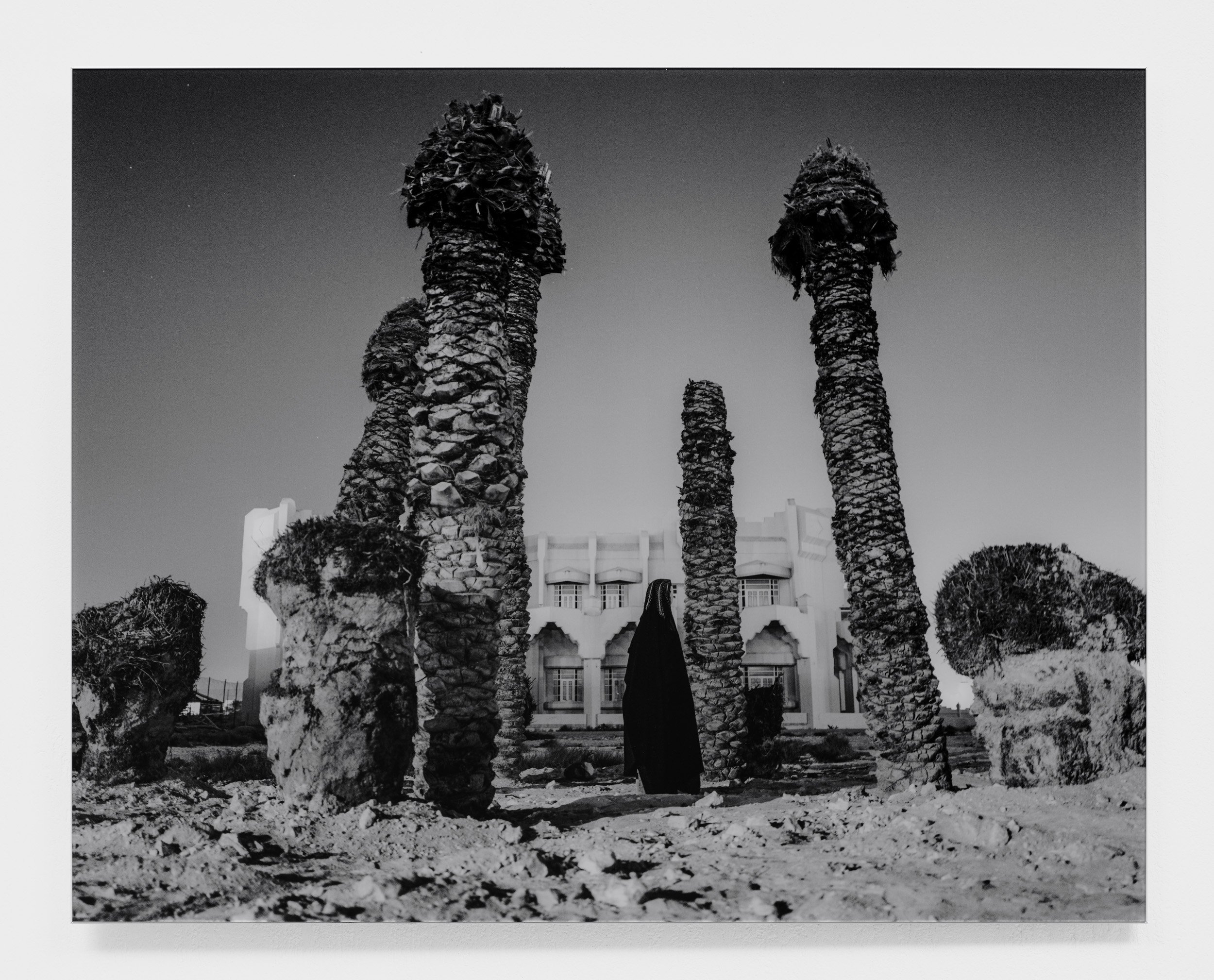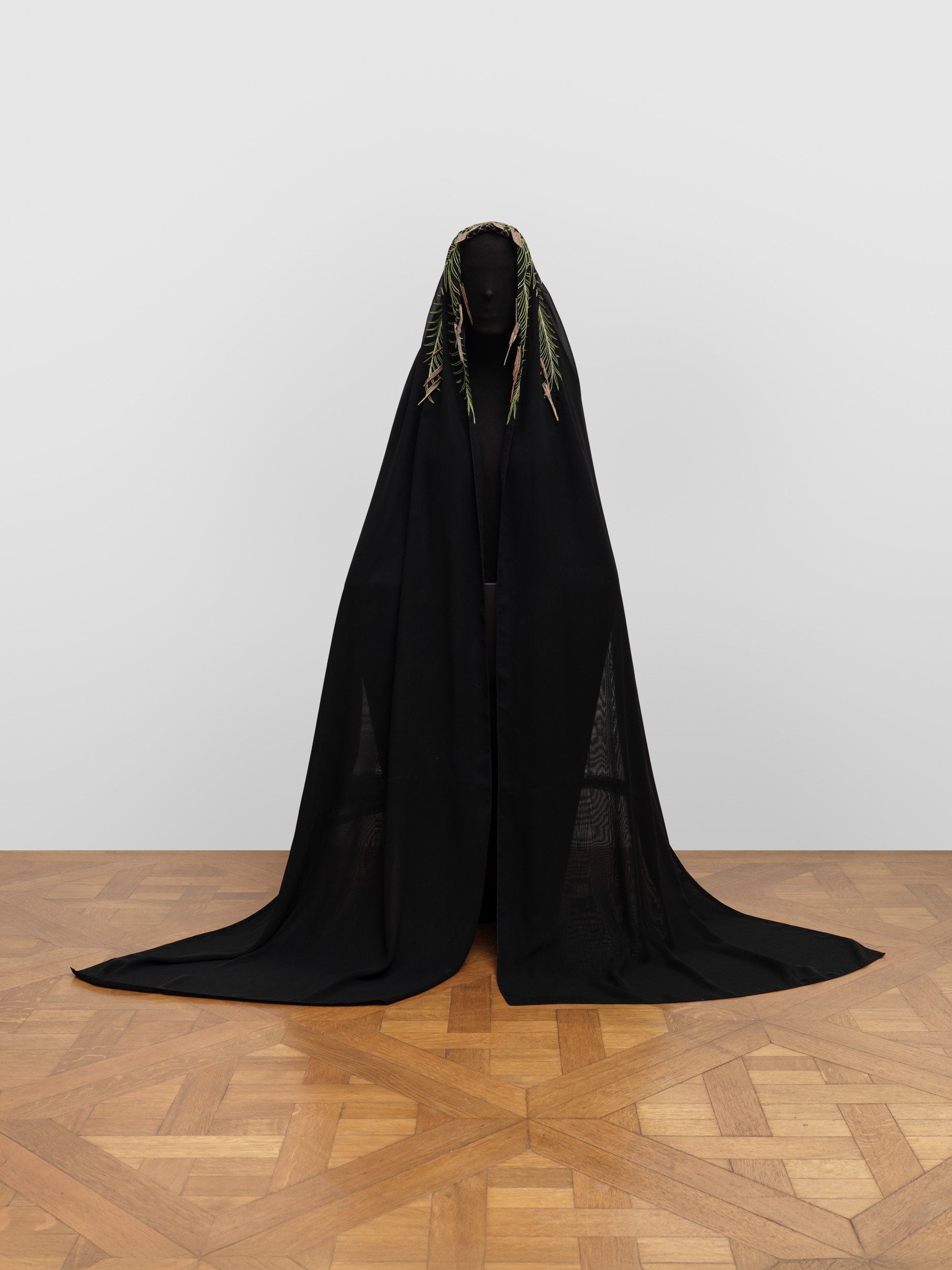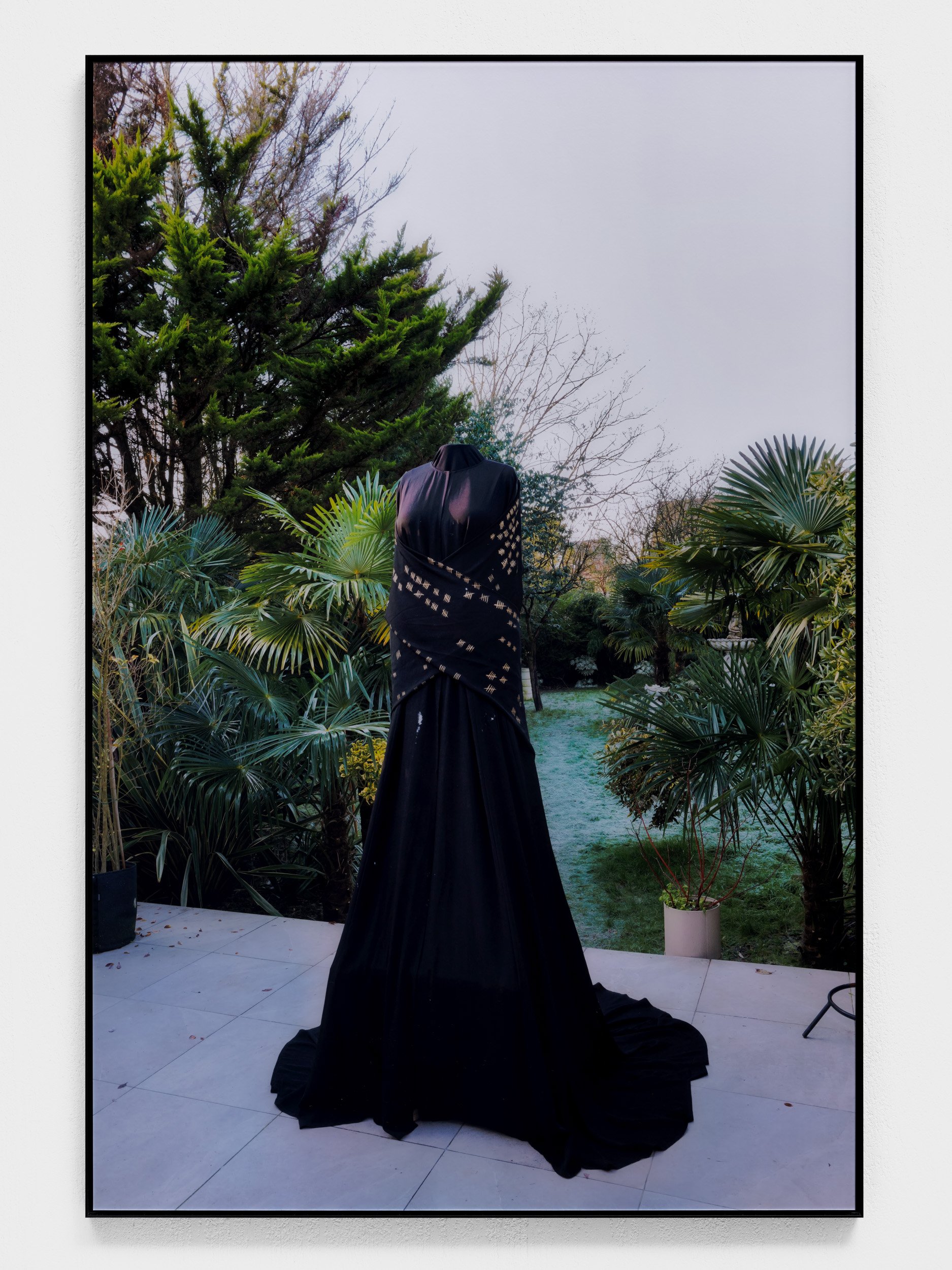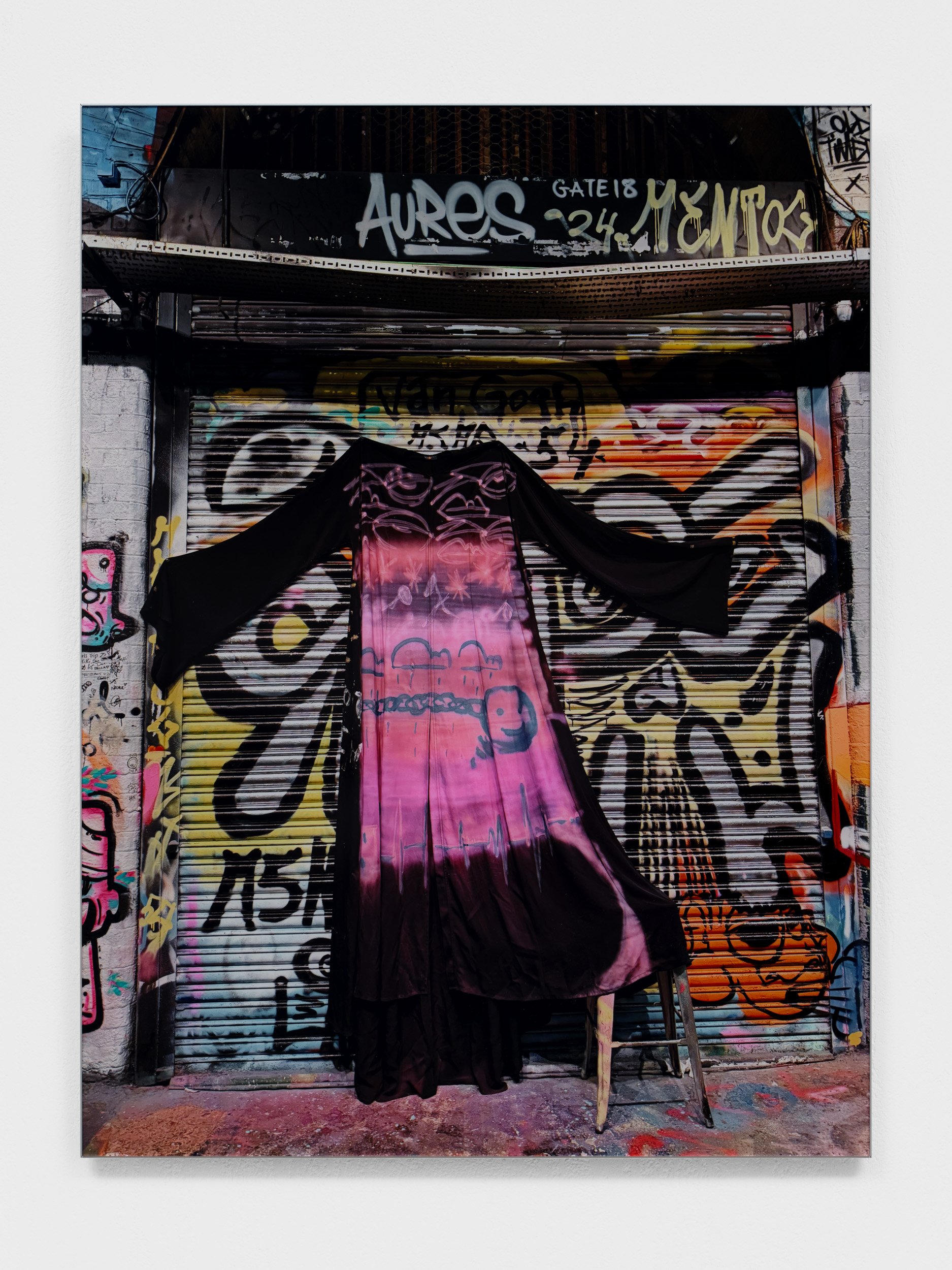T h e B u r n i n g O u d A b a y a
The Abaya is a black, flowing cloak traditionally worn by women in the Gulf and other regions. Typically made from polyester or crepe silk, its black dye was historically derived from petroleum. The Thobe, a garment worn by men, is a white, floor-length, straight-cut robe with a collar and cuffs.
The Abaya and thobe are iconic cultural artifacts that remain underrepresented in wider discussions of identity. This is partly due to their association with it’s personal sacredness. In effect, this creates a resistance to engage with these garments meaningfully beyond fashion interpretations. The Burning Oud Abaya retains the core heritage of these garments whilst expressing their personal and collective lived experiences.
Overharvesting oud has endangered the Aquilaria trees, making it a rare and valuable commodity inseparable from environmental fragility. When Aquilaria trees are deliberately wounded, it becomes infected by a fungi and forms a fragrant resin; a defence mechanism that encapsulates the tension between beauty and struggle. This act of scarring mirrors the hidden wounds of life, emphasizing the shared pain between humanity and nature. Burning oud to release an intense scent and ritual is deeply rooted in cultural heritage and instantly draws attention. The fragrant smoke, traditionally associated with reverence and celebration, takes on new meaning in The Burning Oud Abaya. It becomes a vessel for mourning for the value of life.
Dreams can reveal subjugated stories that remain untold. They offer personal and collective memories.The Burning Oud Abayais born from a vivid dream of an Abaya covered with oud wood chips and consumed by flames. The series of Abayas become monumental garments that navigate contrasting transitions between destruction, loss, resistance, renewal, tradition and innovation.
From a vivid dream where raw oud wood appeared ablaze, its flames embodying both pain and transformation. This dream unlocked a long-buried memory of a woman whose life ended in fire, her untold story shaped by silence and societal pressures. The imagery of the burning oud connects to the woman’s struggles to the spiritual essence of the tree, creating a profound link between human grief and nature’s sacrifice.
The Oud Abaya, 2024
Oud on fabric
IV Drip Guerrilla Installation in Al Khor - Qatar, The Oud Abaya, 2025
Oud, recycled water bottles and IV tubing on fabric
Map of Orientation
During the seventeenth and nineteenth century, African slaves contributed to the pearl diving industry. Qatar announced the Abolition of Slavery in 1956. Africans are part of the Gulf’s communities, yet their narratives remain marginalised and disconnected from broader discourses and global social movements. The Map of Orientation preserves the diverse Gulf identities in the past and present.
Map of Orientation, 2024
Oud on polyester, crepe, silk
320 x 280 cm
Growth Shayla
Growth Shayla, a hand embroidered headscarf designed to complements the series of Abayas. The trunk of a palm tree flourishes from reserve to the forefront of the mind representing growth and resilience. Photographed within a surreal site of dead palm trees, the imagery reflects the precariousness of growth when deprived of deep, sustaining roots.

Immerse
Immerse pays homage to the male pearl divers who provided wealth for merchants of the pre-oil Gulf era. Divers faced gruelling conditions endurance and loss by plunging into unpredictable and often treacherous waters with minimal equipment, holding their breath for extended periods while rocks tied to their feet kept them submerged to gather pearls. Meanwhile, women stayed ashore, awaiting their return, often facing months of uncertainty and hardship.
In Immerse, the abaya becomes a powerful symbol of resilience, sacrifice and tradition. The artist performs a pool dive wearing a three-meter-tall abaya from The Burning Oud Abaya series, embodying the collective stories of preceding generations in each panel.
Immerse, 2024
Video installation still.
Looped 6 minutes.
T r a f f i c k e d
This story explores the formations of grooming, trafficking, emotional manipulation, body shaming, institutional neglect, and sexual exploitation.
At its core, Trafficked challenges the traditional notion of a woman’s place, suggesting that the real danger lies not in stepping beyond the confines of the home, but in how society shapes women’s agency.
This series narrates Dana’s pursuit of autonomy from her community’s constraints, only to find herself suddenly subjected to another form of suffering and humiliation abroad - a society she had hoped would provide her the safety and recognition she sought as a young girl.
The series features two hand-painted, six-panel abayas: the first, inscribed with the word ‘Trafficked’, is consumed in a symbolic fire ceremony. This act represents the arduous journey of reintegration into her community, symbolically shedding the ‘trafficked’ label as she returns home.
From its ashes emerge the second abaya, bearing the phrase ‘Years of Stolen Youth’. Gold tally marks adorn the garment, each representing a day of recovery. Dana revisits the place abroad where she was exploited, this time on her own terms, free.
Equality
Equality incorporates the thobe into the abaya, the sole representation of male attire in this body of work. Creating a cultural dialogue between the construct of intimacy, shame, fragility of relationships which begins to redefine cultural and gender identities.
Equality Abaya, 2024
polyester, crepe silk, velcro
177cm x 145cm x 240cm










